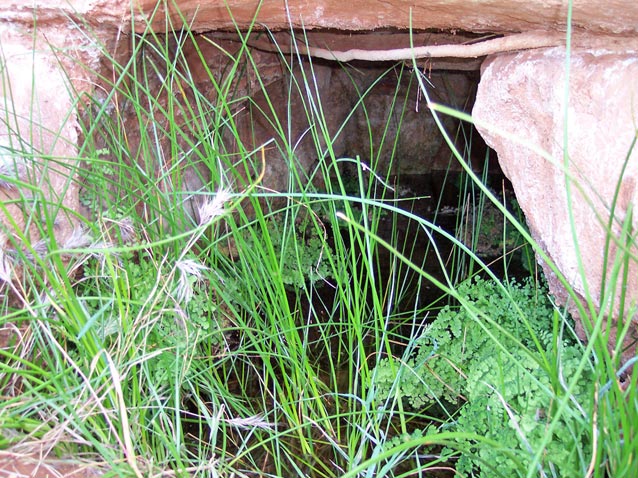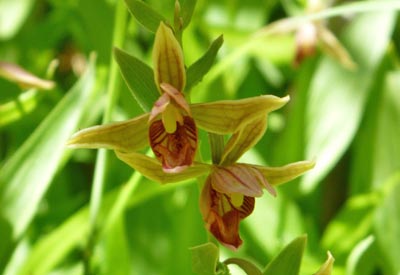Springs are important water sources in arid landscapes, supporting unique plant associations and sustaining high levels of biotic diversity. Because springs rely on groundwater, they can serve as important indicators of change in local and regional aquifers. On the Colorado Plateau, spring ecosystems also provide vital habitat for both endemic and regionally rare species, including several types of orchids and declining populations of leopard frogs. Throughout the Southwest, a vast majority of springs have been developed for human or livestock use in historic times. Undisturbed spring ecosystems on National Park Service lands can provide reference condition data for degraded springs in other areas.

NPS
Long-term monitoring
At selected sites in selected Southern Colorado Plateau Network (SCPN) parks, springs will be monitored on a five-year, rotating basis. Spring flow, wetted extent, and water quality will be monitored, and the total habitat area associated with each spring will be measured. In addition, the composition and structure of wetland vegetation will be described. Human alterations and impacts will be documented, and their effects tracked.
Past work on springs in SCPN parks included a comprehensive inventory of 79 selected springs in and near parks across the Colorado Plateau that was completed in 2005. Additionally, spring ecosystems were inventoried at Canyon de Chelly NM in 2006 and 2011, at Grand Canyon NP in 2009 and 2010, and at Navajo NM in 2010.
Management Applications

NPS
Historically, springs on the Colorado Plateau have been widely used as domestic and livestock water sources. At some springs within SCPN parks, the remnants of previous land use, such as water diversions and spring boxes, are still visible and their impacts, including altered vegetation composition, are still evident. The effects of visitor use, including water pollution, social trailing, and trampling, are also a concern in some parks. Potential decline in flow due to groundwater withdrawals outside park boundaries threatens springs in many parks. Climate change, especially altered precipitation regimes, can also change groundwater availability, resulting in altered spring flow and changes in the composition and structure of aquatic and riparian plant and animal communities around springs.
In the first few years of data collection, we will document current conditions in SCPN springs. Over the long term, these data will be used to (1) track trends in spring flow, water quality, and biotic diversity, (2) document effects of human impacts on spring ecosystems, (3) determine ranges of hydrologic and biologic variability in spring ecosystems, and (4) document spring ecosystem response to climate change.
Contact
Steve Monroe, Stephen_Monroe@nau.edu
Prepared by the Southern Colorado Plateau Network Inventory and Monitoring Program, 2012.
Tags
- canyon de chelly national monument
- chaco culture national historical park
- el morro national monument
- glen canyon national recreation area
- grand canyon national park
- mesa verde national park
- navajo national monument
- salinas pueblo missions national monument
- yucca house national monument
- swscience
- american southwest
- southern colorado plateau
- scpn
- water
- springs
- monitoring
- project
Last updated: April 22, 2016
